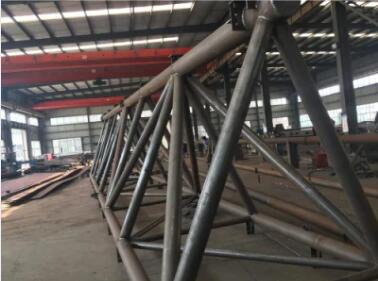Building Foundations: A Comprehensive Guide to Common Types of Structural Materials in Construction
2024-01-06
Introduction:
In the realm of construction, the choice of structural materials is akin to selecting the perfect palette for an artist's masterpiece. The materials chosen not only determine the strength and durability of the structure but also influence its aesthetic appeal. In this blog post, we embark on a journey through the common types of structural materials that form the backbone of construction projects, shaping the modern skyline and infrastructure we encounter daily.
1. Concrete:
Versatility Unleashed:
- Composition:
- A mixture of cement, aggregates (such as sand and gravel), and water.
- Applications:
- Foundations, slabs, columns, and various structural elements.
- Advantages:
- Excellent compressive strength, durability, and moldability for diverse shapes.
2. Steel:
The Mighty Alloy:
- Composition:
- An alloy of iron and carbon, often with additional elements like manganese or chromium.
- Applications:
- Structural frames, beams, columns, and reinforcement in concrete.
- Advantages:
- High tensile strength, durability, and flexibility for architectural versatility.
3. Wood:
Nature's Contribution:
- Composition:
- Natural wood, such as timber, used in construction.
- Applications:
- Framing, decking, and various architectural elements.
- Advantages:
- Renewable, lightweight, and aesthetically pleasing.
4. Masonry:
Bricks and Blocks:
- Composition:
- Bricks or concrete blocks held together with mortar.
- Applications:
- Load-bearing walls, partitions, and facades.
- Advantages:
- Fire resistance, thermal mass, and ease of construction.
5. Composite Materials:
Innovative Blends:
- Composition:
- Combination of different materials, such as fiberglass composites or reinforced concrete.
- Applications:
- High-performance structures, bridges, and components.
- Advantages:
- Enhanced strength-to-weight ratio, corrosion resistance, and tailored properties.
6. Aluminum:
Lightweight Brilliance:
- Composition:
- Lightweight metal derived from bauxite ore.
- Applications:
- Windows, curtain walls, and lightweight structural elements.
- Advantages:
- Low density, corrosion resistance, and ease of fabrication.
7. Glass:
Transparency and Strength:
- Composition:
- Silicon dioxide-based material.
- Applications:
- Facades, windows, and structural glazing.
- Advantages:
- Transparency, aesthetics, and potential for energy efficiency.
8. Masonry Reinforcement:
Adding Strength to Tradition:
- Composition:
- Reinforcing elements like steel bars embedded in masonry.
- Applications:
- Strengthening masonry structures.
- Advantages:
- Improved tensile strength and structural stability.
Conclusion:
The tapestry of construction is woven from a rich assortment of structural materials, each contributing its unique characteristics to the masterpiece of a completed structure. From the enduring strength of concrete to the flexibility of steel and the natural elegance of wood, the common types of structural materials form the foundation upon which architects and engineers bring their visions to life. As technology advances and sustainability becomes a driving force, the palette of available materials continues to evolve, ensuring that future constructions not only stand tall but also reflect the values of efficiency, innovation, and environmental responsibility.



